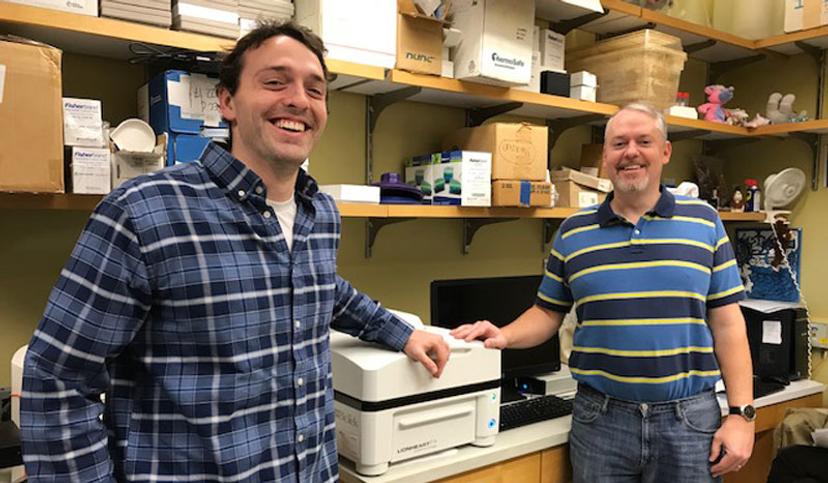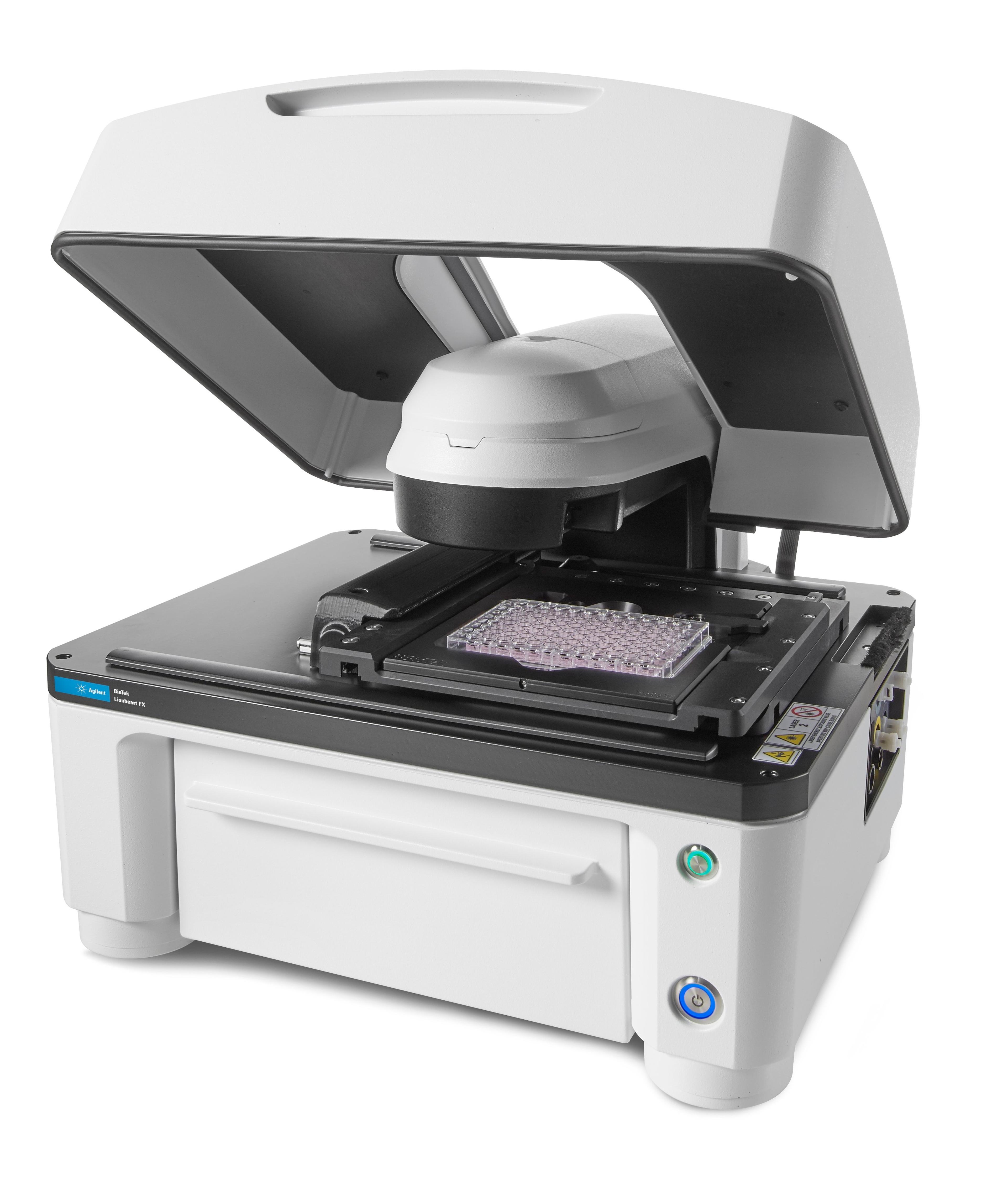Beating Cystic Fibrosis – Perfecting an Intestinal Assay in the Hunt for New Gene Modulators
Learn how a lab in the US has perfected a high-throughput assay in mouse organoids for testing potential new cystic fibrosis drugs
6 Dec 2017
Cystic fibrosis is a disease which causes immense suffering, and Dr. Craig Hodges and his team in Cleveland, Ohio USA are on the front line in the search for treatments and a cure. Hodges is a cell and developmental biologist and Assistant Professor working at the Case Western Reserve University’s School of Medicine. He works on mouse models of cystic fibrosis, some well-established and others created in his own laboratory. Based in the Department of Paediatrics, his research tackles questions around how specific cell types contribute to the disease and whether those processes can be halted or even reversed. Ultimately, he is on a mission to help either alleviate or eliminate the suffering of cystic fibrosis patients.

Dr. Craig Hodges (right) and graduate student Daniel McHugh (left) use BioTek’s Lionheart™ FX Automated Microscope for high-throughput analysis of compounds that may modulate the CFTR gene.
Understanding How the Cystic Fibrosis Gene Operates
Hodges and his team employ a series of both traditional and new cystic fibrosis mouse models to generate conditional inactivation (or restoration) of CFTR gene function in specific tissues, specific cell types, and at specific time points during cellular development. The CFTR gene codes for the cystic fibrosis transmembrane conductance regulator protein, or CFTR for short.
Hodges’ main research focus is on how CFTR gene mutations in specific intestinal cell types of the cystic fibrosis mouse model cause intestinal dysfunction, and how gene modulators may modify the resulting intestinal dysfunction, leading to better treatments. To achieve this, his team is using a novel cell platform pioneered by other labs (intestinal organoids) and a high-throughput assay that is perfect for testing new and existing compounds that may modulate the mutant gene activity. The assay is based on organoid ‘swelling’, but problems were encountered in reliably measuring this phenotype— until they discovered the Lionheart FX Automated Microscope.
Finding the Right Cell Imaging Technology
The assay entails adding forskolin – a natural extract from the Coleus plant - to live organoid cultures which then ‘swell’ according to the degree of CFTR gene activity. The greater the gene activity, the faster and greater the swelling observed in the organoids. Measuring this presented a technical challenge, since it entailed quantifying the degree of swelling in live cultures. As soon as the assay was initiated with forskolin, Hodges was looking to measure the increase in the size of organoids every five minutes over a period of three to five hours. They hit problems straight away, as Hodges notes: “Using traditional microscopes didn’t work out. It requires too much time and fine-tuning.”
That all changed with the emergence of BioTek’s Lionheart FX Automated Microscope, which solved Hodges’ problem. He identifies its best feature immediately as the ability to “take quick images and measurements in multi-well dishes in real time.” This was hugely important when it came to using the assay for testing new compounds as potential drug modulators, since Hodges reports that the “Lionheart FX allows 1-1536-well format for the testing of many compounds.”

Using the Lionheart FX Automated Microscope has enabled the Hodges team to be certain that it has a reliable and effective high-throughput assay for the identification of new CFTR gene modulators which may be further developed into potential treatments for cystic fibrosis.
“We have verified that some compounds work quite well on certain CFTR mutations and other compounds do not,” says Hodges.
As for his overall experience of using the BioTek Lionheart FX, Hodges considers it a “terrific machine…….it does exactly what we want, and more….love the environment control for live-cell analysis and would buy again.” He is equally complimentary around the manufacturer’s approach to product support: “BioTek is great. We had one small issue and they fixed it right away.”
Future Developments
The successful development of the forskolin-induced swelling assay using mouse organoids gives the Hodges team confidence that it can take the next step into applying the assay to patient samples:
“We are hoping to use the intestinal organoid platform to identify new CFTR modulators for CF patients,” says Hodges.
He is not averse, either, to making longer-term predictions for the cystic fibrosis research field, citing gene editing as a potential cure for many genetic disorders, including cystic fibrosis.
Find out more about the vital research of the Hodges lab and how the BioTek Lionheart FX Automated Microscope could help your research.
Do you use the Lionheart FX Automated Microscope in your lab? We'd love to hear from you. Share your expertise and leave an opinion here.

